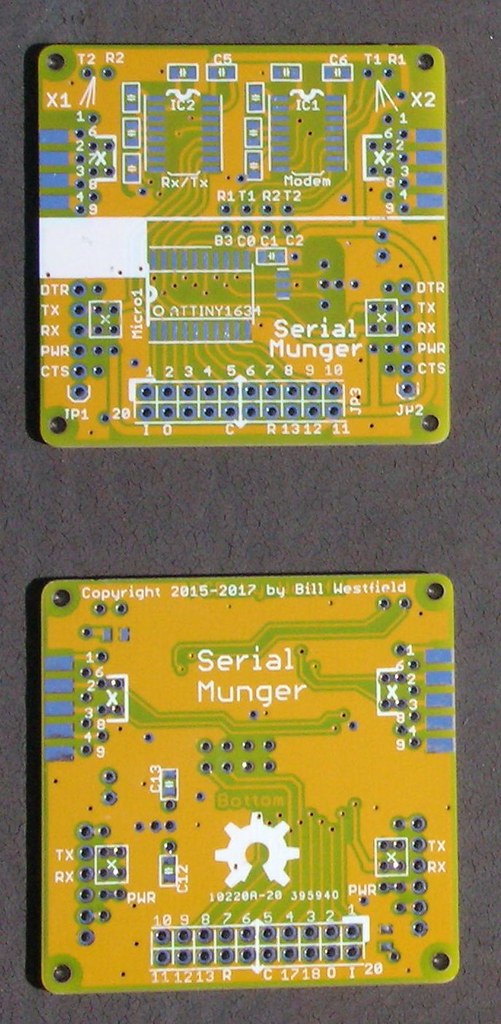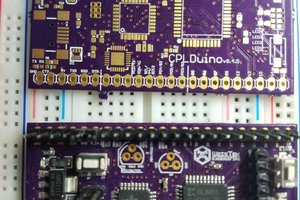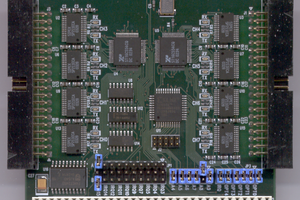Aside from providing the core ATtiny support circuitry, the board provides footprints for the ubiquitous FTDI TTL-Serial cable (for applications that don't need RS232), and max232-style drives with 9-pin D connectors for talking to actual legacy rs232 ports.
The board is designed to be populated in subsets.
If you don't need the rs232 level shifting, you can leave that part of the board unpopulated, or even shear it off.
For a basic tx/rx settup, you can add one max232.
Adding the second max232 will permit adding additional rs232 modem or control signals; the driver and connectors are set up to allow flexible jumper connections to ... wherever.
A crystal or resonator can be added for better frequency accuracy/stability.
There are traces that can be cut and re-jumpered to achieve different DTE/DCE-ness.
And it fits in the 50x50mm "sweet spot" for cheap manufactured PCBs.
 WestfW
WestfW

 Jeremy g.
Jeremy g.

 Keith
Keith
 Plasmode
Plasmode